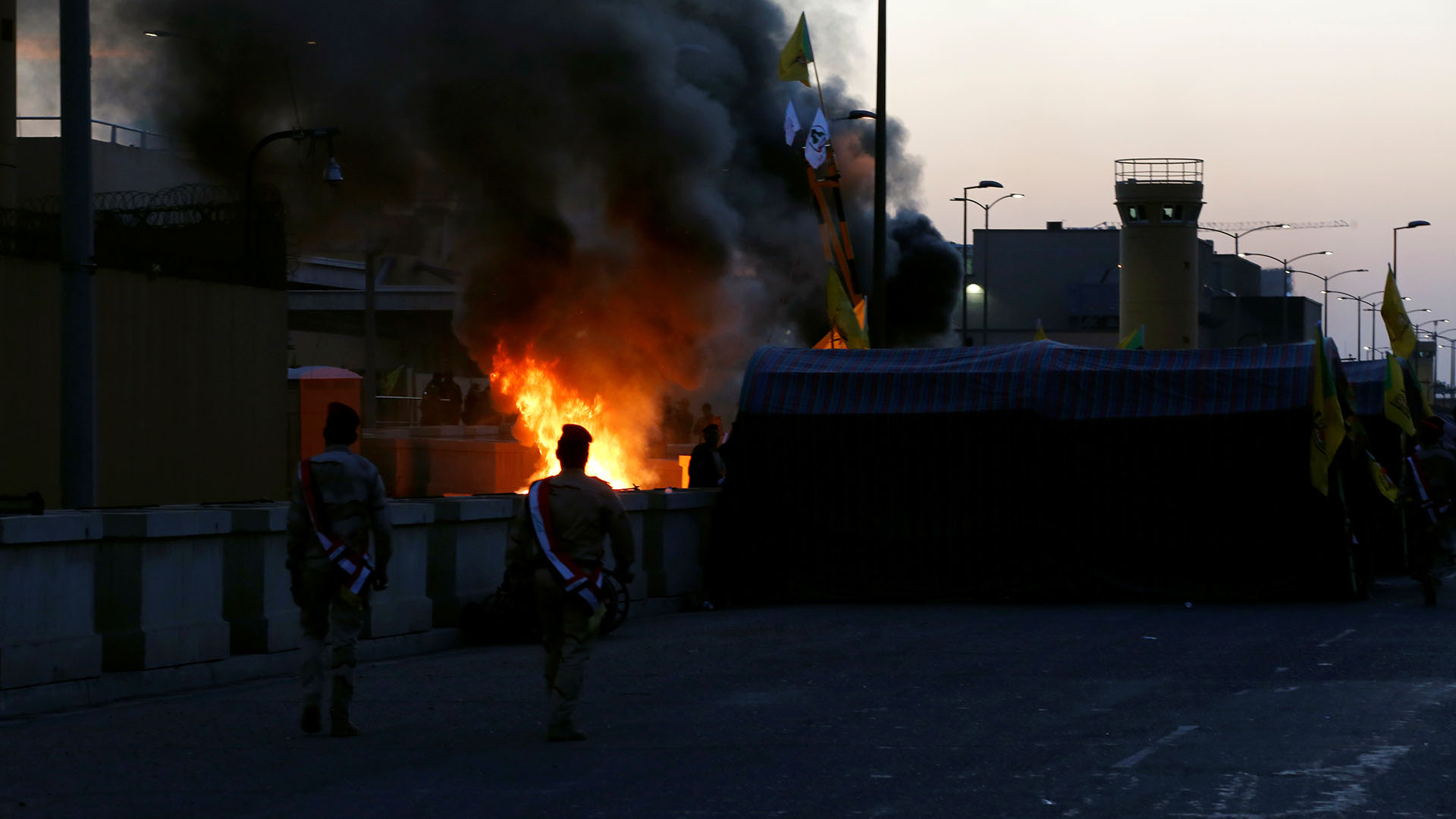
Iraqi security forces walk as the Hashd al-Shaabi (paramilitary forces) fighters set the U.S. embassy wall on fire, as they protest to condemn air strikes on their bases, in Baghdad, Iraq, December 31, 2019. /Reuters/Wissm al-Okili
Iraqi security forces walk as the Hashd al-Shaabi (paramilitary forces) fighters set the U.S. embassy wall on fire, as they protest to condemn air strikes on their bases, in Baghdad, Iraq, December 31, 2019. /Reuters/Wissm al-Okili
On Sunday, U.S. officials announced a successful airstrike in Iraq and Syria against an Iranian-backed militia group, Kata'ib Hezbollah.
The Kata'ib Hezbollah is part of the Popular Mobilization Forces, an umbrella group for Iranian-backed militias that operate in the region. They were designated terrorists by the U.S.
The U.S. government said its weekend airstrikes were in response to the killing of an American contractor in a rocket attack at an Iraqi military base. Iraqi security and militia sources said at least 25 fighters were killed and more than 55 were wounded.
On Monday, Iraqi Prime Minister Adel Abdul Mahdi condemned the U.S. airstrikes, saying the action would have consequences.
Russia and Saudi Arabia also condemned the attacks.
On Tuesday, militiamen and supporters of Kata'ib Hezbollah stormed the U.S. embassy in Baghdad. They smashed the main door of the compound and set fire to the reception area.
Reuters reports U.S. Defense Secretary Mark Esper announced the U.S. would be sending additional troops to the embassy in Baghdad and called on the Iraqi government to help protect American personnel.
Source(s): Reuters